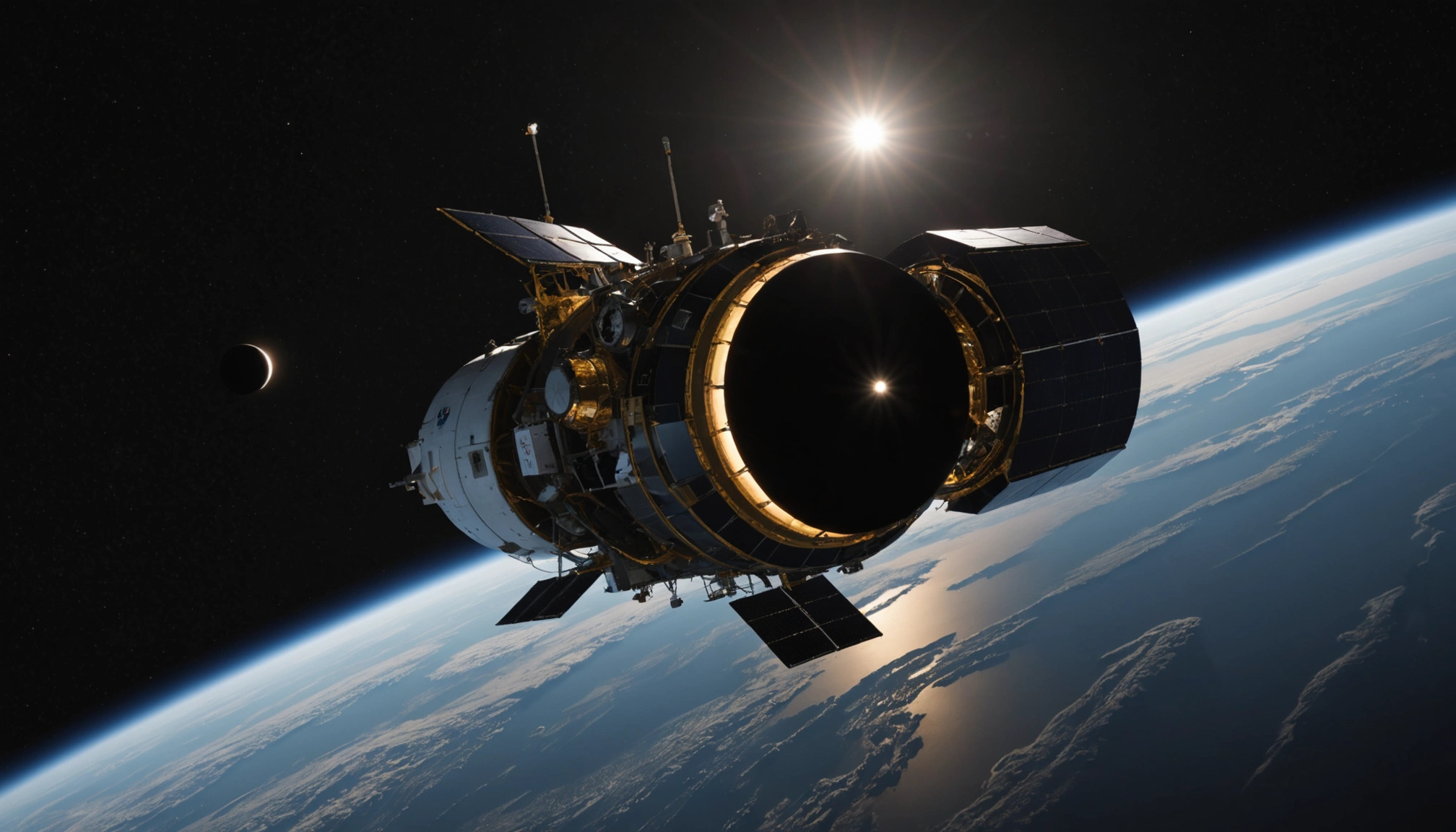Twin Spacecraft Create Artificial Solar Eclipse, Offering Unprecedented Views of Sun's Corona

In a groundbreaking achievement, the European Space Agency's (ESA) Proba-3 mission has successfully created an artificial solar eclipse using two spacecraft flying in precise formation. This feat allows scientists to observe the Sun's elusive outer atmosphere, the corona, for extended periods, potentially unlocking secrets about solar activity and its impact on Earth. The mission marks a significant advancement in space technology and solar science, promising new insights into the Sun's behavior and its influence on our planet.
A Dance in Space: Precision Formation Flying
The Proba-3 mission, launched in December 2024, consists of two satellites: the Coronagraph and the Occulter. These spacecraft are designed to fly in a carefully controlled formation, maintaining a fixed distance of approximately 150 meters (492 feet) while orbiting Earth at a distance of more than 600 kilometers. The Occulter spacecraft carries a 1.4-meter disc that blocks the Sun's bright light, casting a shadow on the Coronagraph. This allows the Coronagraph's specialized instrument, ASPIICS (Association of Spacecraft for Polarimetric and Imaging Investigation of the Corona of the Sun), to image the faint corona, mimicking a natural solar eclipse.
The precision required for this formation flying is extraordinary. The satellites must maintain their relative positions with millimeter-level accuracy, a feat achieved autonomously through a suite of advanced navigation and positioning technologies, including GPS navigation, star trackers, lasers, and radio links. This level of precision allows for prolonged and stable artificial eclipses, offering scientists unprecedented opportunities to study the corona.
Unveiling the Sun's Mysteries: The Corona and Space Weather
The Sun's corona is a region of extremely high temperatures, reaching millions of degrees Celsius, far hotter than the Sun's surface. This phenomenon, known as the "coronal heating problem," has puzzled scientists for decades. The corona is also the source of the solar wind, a stream of charged particles that constantly flows outward from the Sun, and coronal mass ejections (CMEs), massive eruptions of plasma and magnetic fields.
CMEs can have a significant impact on Earth, causing geomagnetic storms that disrupt communication systems, damage satellites, and even cause power outages. Understanding the corona and the processes that drive solar activity is crucial for predicting and mitigating these space weather events.
Natural solar eclipses provide brief opportunities to observe the corona, but they are infrequent and short-lived. Ground-based coronagraphs, telescope attachments that block out the Sun's glare, are also used to study the corona, but they are limited by the Earth's atmosphere, which scatters sunlight and obscures the view.
Proba-3 overcomes these limitations by creating artificial eclipses in space, above the Earth's atmosphere. This allows for longer, clearer observations of the corona, revealing details that are not visible from the ground. The mission can create eclipses for up to six hours at a time, once every 19.6-hour orbit, providing scientists with ample time to study the corona's structure, dynamics, and magnetic fields.
Early Successes and Future Prospects
The Proba-3 mission has already achieved significant success. The first artificial solar eclipse was created in March 2025, and several more have followed during the ongoing checkout phase. Preliminary images of the corona have been released, showcasing the mission's capabilities and the quality of the data it can provide.
Scientists are particularly excited about the ability to observe the inner corona, the region closest to the Sun's surface, which is difficult to study with existing instruments. Proba-3 will fill a critical observational gap, allowing researchers to follow the evolution of CMEs as they erupt from the Sun and accelerate outward.
The mission is expected to provide valuable insights into the coronal heating problem, the origin of the solar wind, and the processes that drive space weather. By studying the corona in unprecedented detail, Proba-3 will help scientists better understand the Sun's influence on Earth and improve our ability to predict and mitigate the impacts of solar activity.
A Collaborative Effort: International Cooperation
The Proba-3 mission is a collaborative effort led by ESA, with contributions from numerous companies and institutions across Europe. The mission highlights the importance of international cooperation in space exploration and scientific research. By pooling resources and expertise, scientists and engineers from different countries can achieve ambitious goals that would be impossible to accomplish alone.
The success of Proba-3 demonstrates the potential of formation flying technology for future space missions. This technology could be used to create large space telescopes, distributed sensor networks, and other innovative systems that require precise coordination between multiple spacecraft.
Conclusion: A New Era in Solar Observation
The Proba-3 mission represents a significant step forward in our ability to study the Sun and its corona. By creating artificial solar eclipses in space, the mission provides scientists with unprecedented opportunities to observe the Sun's outer atmosphere and unlock its secrets. The data collected by Proba-3 will help us better understand the processes that drive solar activity and its impact on Earth, ultimately leading to improved space weather forecasting and protection of our technological infrastructure. The mission not only advances our scientific knowledge but also demonstrates the power of international collaboration and technological innovation in space exploration.
Related Articles

China Embarks on Decade-Long Mission to Unlock Secrets of Asteroids and Comets with Tianwen-2

